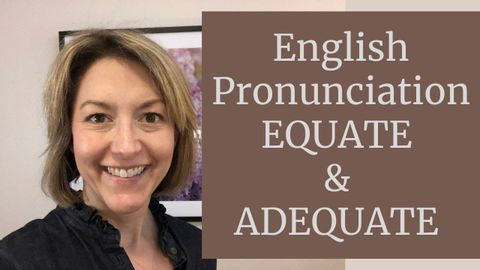EQUATE & ADEQUATEの発音方法 - アメリカ英語発音レッスン (How to Pronounce EQUATE & ADEQUATE - American English Pronunciation Lesson)
Summer が 2021 年 07 月 16 日 に投稿  この条件に一致する単語はありません
この条件に一致する単語はありませんUS /səbˈskraɪb/
・
UK /səb'skraɪb/
- v.t./i.(定期的なサービスに)申し込む : 予約をする : 予約金を払う
US /ɪˈkwɪvələnt/
・
UK /ɪˈkwɪvələnt/
- adj.同等の;同義の
- n.等価 : (効果 : 価値などが)同等のもの
US /prəˌnʌnsiˈeʃən/
・
UK /prəˌnʌnsiˈeɪʃn/
- n. (c./u.)発音;正確な発音;発音の仕方;発音ガイド
US /ˈslaɪtli/
・
UK /ˈslaɪtli/
エネルギーを使用
すべての単語を解除
発音・解説・フィルター機能を解除
